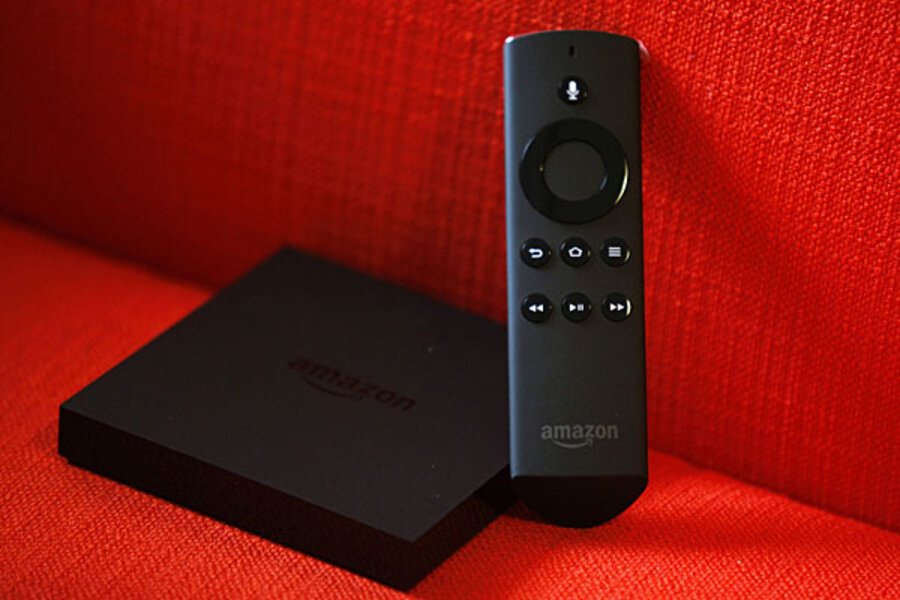Amazon Fire TV vs Chromecast: why pay more for a set-top box?
Loading...
As Amazon Fire TV ($99) bursts onto the market to compete with streamers like the Roku 3 ($99) and Apple TV ($99), you may be wondering what these set-top boxes offer over cheaper streaming sticks, specifically Google's Chromecast ($35) and Roku's Streaming Stick ($49.99). Each has its own advantages and drawbacks, and it really comes down to what features you want, and possibly what tech ecosystem you are already a part of.
So should you spend less on a streaming stick, or splurge on a fully-capable box? Here's our quick-and-dirty guide.
Size and Connections
The streaming sticks are obviously smaller and they plug directly into your TV's HDMI port. They are also capable of drawing power from an available USB port. The boxes all offer extra ports, including an Ethernet port which could be important if you don't have great Wi-Fi.
Speed and Power
The Fire TV is way out in front with a quad-core processor and 2GB of RAM, while the Roku 3 is also snappy with a dual-core processor. By comparison, the streaming sticks and Apple TV lag behind. This won't affect the streaming speed, but it will impact your navigation through menus, how quickly apps load, and potentially how games are handled.
Remote Control
If you like a dedicated remote control, the Chromecast is out. It requires a smartphone, tablet, or laptop to choose content. The Roku systems can be controlled using Android or iOS apps, or you can use the physical remote controls that come with them. The Roku 3 also has motion control in the remote for gaming, and a nifty headphone port for watching TV without bothering anyone else in the room; the Roku stick, however, does not. The Fire TV remote boasts voice search, but it's limited to Amazon's Instant Video library and Vevo, so it can't search Netflix or any of your other content channels. You can also get a dedicated Amazon Fire Game Controller for an extra $39.99 and use your Fire TV as an Android gaming console.
Content
Roku is a clear leader here, and both the Roku 3 and the Streaming Stick have access to over 1,200 channels. They also have a useful universal search function that makes it easier to quickly find the shows or movies you want. Fire TV and Apple TV both have numerous channels and apps, but omit at least some favorites like Spotify, Vudu, Showtime, and/or HBO Go. Chromecast still has limited functionality, though it does support Netflix, Hulu, and others.
Casting
Chromecast is the only one that allows you to stream from your Chrome browser on any computer or mobile device, but it doesn't work perfectly and it doesn't work with all content. (It won't work with Silverlight for example.) Apple TV supports AirPlay for mirroring or streaming content, but only from a Mac, iPhone, iPad, or iPod touch. Fire TV allows you to stream from a Kindle Fire tablet. The Roku app offers limited streaming options for your personal photos, music, and videos, but you can find third-party apps that will allow you to mirror your Android or iOS device.
Overall, the Roku Streaming Stick doesn't ask you to sacrifice much over a set-top box like the Roku 3, and it is half the price. If you don't care about a remote control, then the Chromecast is a winner on price and we expect more channels to roll out on it very soon. If you're invested in the Apple ecosystem, then keep an eye out for a new version of Apple TV. If you're happy with Amazon's walled garden and gaming is a factor, then the Fire TV could be your best bet.
For a more thorough comparison of the set-top boxes, check out our guide here. Readers, do you use Chromecast or the Roku Stick? What do you think of it? Let us know in the comments below.
Simon Hill is a contributing writer for Dealnews.com, where this article first appeared: http://dealnews.com/features/Quick-Dirty-Guide-The-Difference-Between-a-Streaming-Stick-Set-Top-Box/1025778.html





